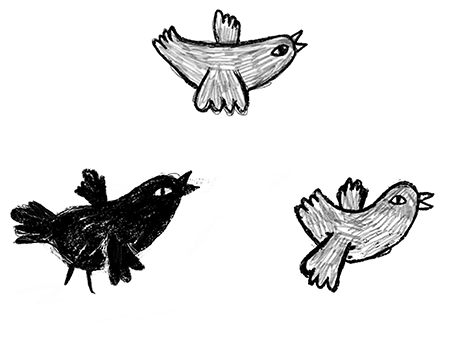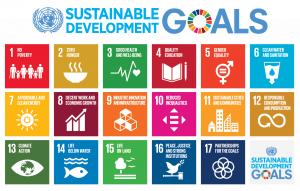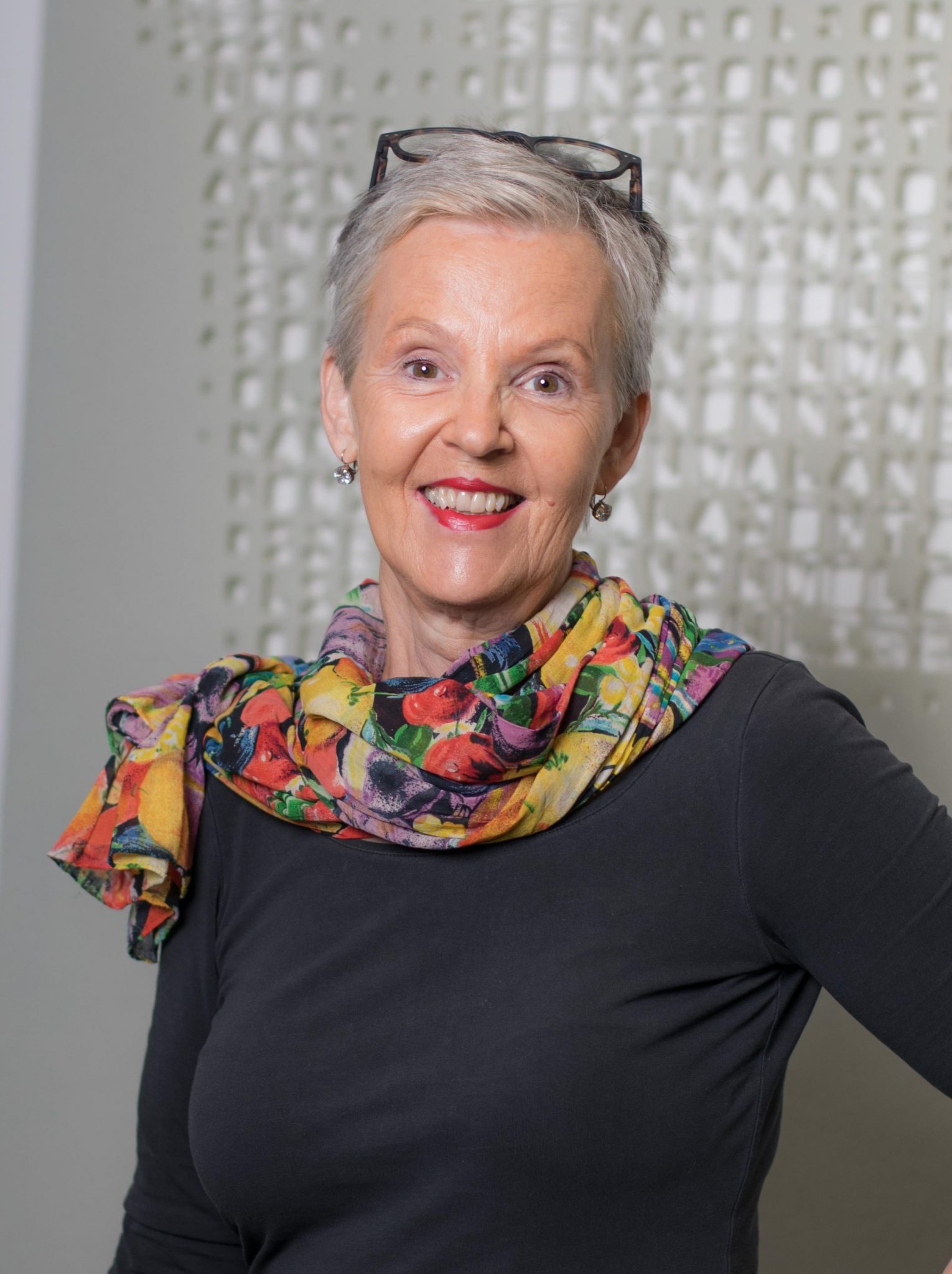Towards a More Sustainable and Responsible Humak – “Sustainable Wednesday Blog Series, Part 1”

Universities of Applied Sciences are committed to the Rector’s Conference of Finnish Universities of Applied Sciences Arene‘s programme for sustainable development and responsibility. The common goal of universities of applied sciences is to be sustainable, responsible and carbon neutral by 2030.
This blog series elaborates on how Humak takes into account the principles of sustainable development in the areas of education, RDI work as well as management and personnel competence from an ecological, social and cultural point of view. Additionally, the sustainable development program involves an annual calculation of our carbon footprint, through which Humak strives to reduce its own impact on the climate. In the blog series, we also present the basics of the calculation and the evolution of Humak’s carbon footprint. Blog posts will be published about once a week on Wednesdays until May 2022. The Sustainable Wednesday blog series launches on 6.4.2022.
Blog 1: “Towards a More Sustainable and Responsible Humak”
Higher education institutions play an important role in achieving the goals of sustainable development. The starting point is that the themes of sustainable development cut across all the goals and operations of universities. Students graduating from Humak must have the skills to promote sustainable development in their industries and combat the negative effects of climate change on society. Through RDI work, solutions to sustainability challenges must be found again. This also requires responsible action from Humak as an employer: we must act as we teach.
Sustainable development is not just about the will to improve the world – it is also regulated in many ways. In addition to the general goals of the UN Agenda 2030, sustainable development work in higher education institutions is guided by the guidelines drawn up by the Ministry of Education and Culture as well as by several laws, official duties and regional regulations. These are all involved in the day-to-day work of the school.
In the future, the importance of both voluntary principles and binding provisions will be emphasized in all work. It is therefore important to ask: are aspects of sustainable development sufficiently included in education to support students’ knowledge and skills for their future work? In the first part of the Sustainable Wednesday blog series, we will discuss what kind of ideas and thoughts the topic evokes at Humak.

Sustainable Development as the Theme of Humak’s Development Days – Expertise From Hamk
The main theme of Humak’s personnel development days in February was sustainable development. The initiator was Mervi Friman, Sustainability Coordinator at Häme University of Applied Sciences. In her speech, Friman stressed that sustainable development must be seen as part of all the activities of universities. In addition to education, RDI activities must also play a role in solving the issues related to sustainable development.
Humak must therefore make bold choices for sustainable development in relation to its own strategy and social mission. This requires responsibility, clear policies and consideration of all elements of sustainable development. These goals cannot be achieved alone. The entire university community must commit to a common goal and build even better competence in sustainable development. It requires partners and cooperation through both strategic partnerships and networks.

In universities, sustainable development measures must be well articulated and made visible in everyday life for the whole community. To get everyone on board, various competitions or social media campaigns that challenge people to make sustainable choices could be organized. The sixth part of the blog series presents the Move Around the World campaign, which will be launched at Humak.
Humak’s Staff Promoting Sustainability
A Sustainable Development Program (KEKE in Finnish) will be prepared for Humak during 2022, with the goal of a net positive Humak. Net positivity includes the smallest possible carbon footprint, which is reduced as part of our day-to-day operations. In addition to the negative footprint, our environment and community are also affected by our positive actions – this is called the handprint. Through education and RDI activities that develop sustainable solutions, Humak does not have to stop at carbon neutrality but can become a net positive university of applied sciences.
With this in mind, Humak’s personnel were involved in the preparation of the KEKE program during the development days in February. The staff had the opportunity to share their thoughts and ideas on sustainable development from the perspectives of education and RDI work. They also had the chance to come up with ways to reduce our carbon footprint. In addition, the staff thought about what it means to act responsibly and sustainably in their own work.
Will KEKE-Consciousness Become a Phenomenon Comparable to Digital Nativeness?
In terms of education, Humak’s staff strongly promoted social sustainability alongside ecological sustainability. While the promotion of inclusion, equality, the prevention of inequality and human dignity may already be reflected in our curricula, they should be better articulated and integrated into the theme of sustainable development. It remains to be seen whether the competence for sustainable development will become a phenomenon comparable to digital nativeness. Will students be sufficiently KEKE-conscious or even more than that when they enter Humak? Are our operations and education being challenged in this regard? Päivi Marjanen, Director of Education, discusses higher level education for sustainable development in Part 4 of the blog series.
The development of networks and partnerships with those implementing and promoting sustainable development was seen by the staff as central to Humak’s RDI activities, without losing sight of Humak’s values and criteria for project cooperation. This also means the courage to question stakeholder cooperation and stick to Humak’s line of responsibility if necessary. In the third part of the blog series, Timo Parkkola, Director of Education, discusses how RDI work can meet the challenges of sustainable development in Humak’s industries and what solutions Humak can produce to build a more sustainable society.
Remote Work Also Puts a Strain on the Environment
The topics discussed by the staff also included the amount of remote work in the future in relation to work on campus. Humak’s campuses are located in somewhat remote areas with limited public transportation. Therefore, traveling by car is sometimes necessary for both staff and students. However, the matter is not so black and white. Remote work also puts a strain on the climate and environment, as the ICT sector is one of the world’s largest consumers of electricity and thus producers of carbon emissions.
One rather radical idea from the staff was to “make Humak a completely virtual university”. This will not solve the emissions problem if we do not pay attention to our energy and equipment choices and the online services and systems we use. It is therefore a matter of finding the right balance between remote teaching and ecologically sustainably located and well-functioning campuses.
We will focus on calculating Humak’s 2020 carbon footprint in Part 2 of this blog series. Our staff’s thoughts on how to reduce our carbon footprint will also be discussed.
Text: Johanna Henriksson, Master of Education, Education Coordinator; Timo Parkkola, Master of Arts, Director of Education; Titta Pohjanmäki, Licentiate of Education, Education Manager. Humak University of Applied Sciences 6.4.2022.
Translation: Mari Ervasti

